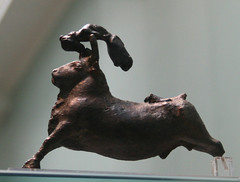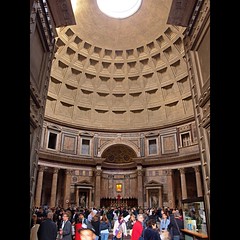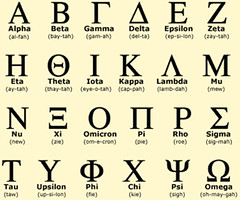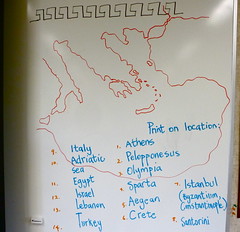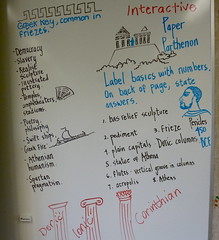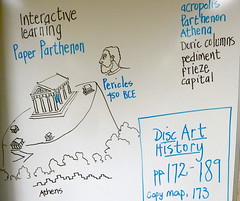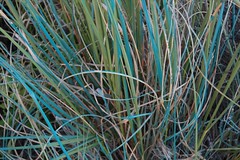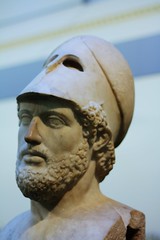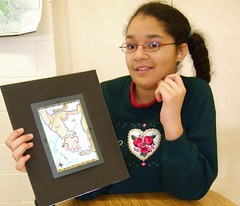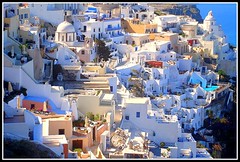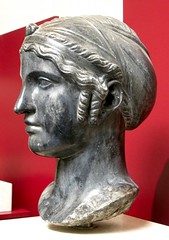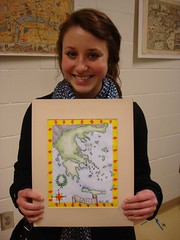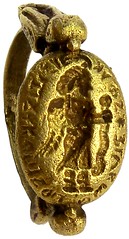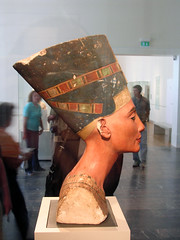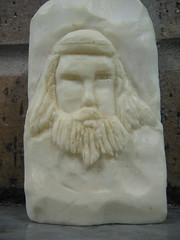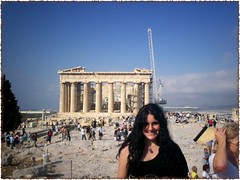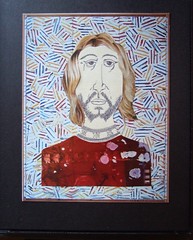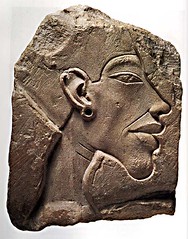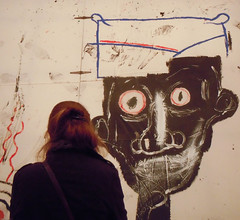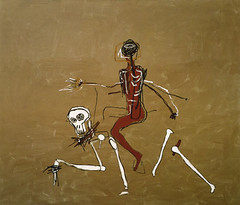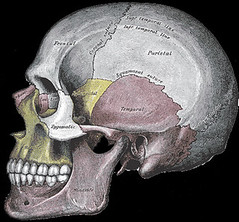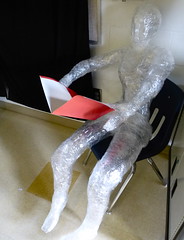Friday, September 28, 2012
Espresso is the basis for a Cappucino or Latte
Espresso is a concentrated beverage brewed by forcing a small amount of nearly boiling water under pressure through finely ground coffee beans.
As a result of the pressurized brewing process, says Wikipdia, the flavours and chemicals in a typical cup of coffee are very concentrated.
Espresso is the base for other drinks, such as a latte, cappuccino, macchiato, mocha, or americano. Espresso has more caffeine per unit volume than most beverages, but the usual serving size is smaller.
Espresso machines were developed in Italy about 1900. In Italy, the rise of espresso consumption was associated with urbanization, espresso bars providing a place for socialization.
In the English-speaking world, espresso became popular, particularly in the form of cappuccino, due to the tradition of drinking coffee with milk and the exotic appeal of the foam; in the United States, this was more often in the form of lattes, particularly with flavored syrups added.
The latte is claimed to have been invented in the 1950s by Italian American Lino Meiorin of Caffe Mediterraneum in Berkeley, California, as a long cappuccino, and was then popularized in Seattle,[10] and then nationally and internationally by Seattle-based Starbucks in the late 1980s and 1990s.
Intelligentsia Coffee, Venice, California, is featured in an informative series: http://vimeo.com/8709313.
The typical serving cup? A demi-tasse; literally, a "half cup."
And a video on how a barista (Italian word) uses the steam infuser tube (wand) to froth and warm the milk for a cappucino or latte. How to froth Milk.
Thursday, September 27, 2012
Paper Pantheon project: labeled exterior and interior
Terms to be added to the paper Pantheon model:
- portico
- Corinthian columns of granite
- pediment
- vestibule
- rotunda
- dome of concrete
- oculus
- height and diameter of dome are equal
- continuous use for 2000 years
- Campus Martius, outskirts of city of Roma.
- Baths of Agrippa nearby.
- Converted to Christian church in medieval period, saving the structure.
- Bas relief on pediment looted during Dark Ages.
- Granite for columns quarried in Egypt.
- Thickness of dome is 21 ft at base, graduating to 4 ft at oculus.
- Hidden chambers engineered within the rotunda form a sophisticated honeycomb structure.
- Drains at center route water underground.
- Coffers, sunken panels, decorate dome interior.
- Influential form in architecture: example at U of Va, designed by Jefferson.
- Marcus Agrippa (63 BC – 12 BC) was a Roman statesman and general.[2] Defence minister to Octavian, the future Emperor Caesar Augustus and father-in-law of the Emperor Tiberius, maternal grandfather of the Emperor Caligula, and maternal great-grandfather of the Emperor Nero.
He was responsible for most of Octavian’s military victories, most notably winning the naval Battle of Actium against the forces of Mark Antony and Cleopatra VII of Egypt.
- portico
- Corinthian columns of granite
- pediment
- vestibule
- rotunda
- dome of concrete
- oculus
- height and diameter of dome are equal
- continuous use for 2000 years
- Campus Martius, outskirts of city of Roma.
- Baths of Agrippa nearby.
- Converted to Christian church in medieval period, saving the structure.
- Bas relief on pediment looted during Dark Ages.
- Granite for columns quarried in Egypt.
- Thickness of dome is 21 ft at base, graduating to 4 ft at oculus.
- Hidden chambers engineered within the rotunda form a sophisticated honeycomb structure.
- Drains at center route water underground.
- Coffers, sunken panels, decorate dome interior.
- Influential form in architecture: example at U of Va, designed by Jefferson.
- Marcus Agrippa (63 BC – 12 BC) was a Roman statesman and general.[2] Defence minister to Octavian, the future Emperor Caesar Augustus and father-in-law of the Emperor Tiberius, maternal grandfather of the Emperor Caligula, and maternal great-grandfather of the Emperor Nero.
He was responsible for most of Octavian’s military victories, most notably winning the naval Battle of Actium against the forces of Mark Antony and Cleopatra VII of Egypt.
Teotihuacan to Attica summary test
Teotihuacan is the city of stone pyramids which is outside of today's Mexico City.
Attica is the region around Athens.
1. Stone pyramids were created by indigenous peoples in the Baja peninsula as well as the Yucatan Peninsula of Mexico. T / F False: there are none in the Baja.
2. The best-known of all Mexican artists is not Frida Kahlo. It is the muralist Diego Rivera.
3. Indigenous peoples of Mexico: the Olmecs, Toltecs, Aztecs and the _Mayans .
4. Black pepper, along with the vanilla bean and cacao bean, are foods that originate in Mexico. T / F False: Black pepper is from Asia. Chili peppers are Central American.
5. Mexico has a _Caribbean_ coastline as well as one on the Pacific and Gulf of Mexico.
6. Mexico's eastern mountain range: _Sierra Madre Oriental_ .
7. The most notable street in Lower Manhattan: _Wall_ .
8. Carnegie Hall and the Plaza Hotel are in _midtown_ Manhattan.
9. To the east of Columbia Univ is the borough called _the Bronx_ .
10. Impecunious Chinese, Jews and Italians historically settled in the _Lower East Side_ of Manhattan.
11. In his early career Basquiat was as much an aficionado of images, a designer, as a graffiti artist. False: he was a poet, not designer.
12. Part of Basquiat's success was due to his location: a) Manhattan b) Brooklyn c) Harlem d) SoHo. Born in B'lyn, he flourished in lower Manhattan, A).
13. If Basquiat had wanted to attend college, it would have been easiest for him to enroll at _NYU_. NYU is part of Lower Manhattan.
14. West of the Bronx is a famous Manhattan neighborhood called _Harlem_ .
15. Basquiat constantly used famous pieces of art as a basis for his paintings. That sort of taking of ideas is called _appropriation_ in the art world.
16. Basquiat loved a kind of jazz that was not popular in the 1980's: a) cool jazz b) bebop c) hip hop d) Dixieland. B) Dizzy Gillespie, etc; bebop.
17. Langston Hughes wrote a poem that seemed to apply very well to Basquiat. It is called " _Genius Child_ ."
18. As a child confined to a the hospital bed Basquiat's mother bought him a copy of a med school text: _Gray's Anatomy_ .
19. Basquiat spoke French, Spanish and _Creole_ , among several languages, because his father was from Haiti .
20. Opaque means not _translucent_ .
21. Incised sculpture is raised above the background to a moderate, not extreme, height. T / False: incised means "cut into."
22. Austria has a small town famous for a sculpture that has been given the Roman title of a __ . Roman title: a Venus.
23. Lockets or other small objects meant to insure safety: __ . amulets or talismans.
24. Akhenaten upset Egyptian art, architecture and religion. One of his many sons was known as _Tutankhamun_ .
25. An exquisite, realistic bust of Queen _Nefertiti_ is part of the legacy of the pharaoh known as Akhenaten.
26. Athens has a fortified district known as the _acropolis_ .
27. Cretans of the earliest era are referred to as _Minoans_.
28. Lesbos and Santorini are in the _Aegean_ Sea.
29. Mesopotamia, the "land between the rivers," is today's a) Iraq b) Saudi Arabia c) Lebanon d) Iran. A) Iraq. Since the US invasion of Iraq, US soldiers have fought and died on the banks of Mesopotamia.
30. Corinth, Olympia and Sparta have a location in common: the _Peloponnesus_ .
31. Homer's Iliad refers to the __ culture. a) Greek b) Turkish c) Minoan d) Mycenaean. c) Life on the isle of Crete.
32. A fresco is created via wet _plaster_ .
33. Minoans were the first Western peoples to build large structures called _palaces_ .
34. The Minoan preceded the Greek which preceded the Egyptian but followed the Phoenician. T / False: ridiculous.
35. Female equality of some degree was seen in the poetic endeavors of people on the isle of _Lesvos or Lesbos_ .
36. A letter O with a horizontal bar in the center: _theta_ .
37. A small table is the symbol for the Greek letter _Pi_ .
38. The symbol for Eta: _H_ .
39. A capital I integrated into a wine glass: _Psi_ .
40. Fraternity which requests membership of the elite: _Phi Beta Kappa, the national honorary society for high grades and ethics_ .
Attica is the region around Athens.
1. Stone pyramids were created by indigenous peoples in the Baja peninsula as well as the Yucatan Peninsula of Mexico. T / F False: there are none in the Baja.
2. The best-known of all Mexican artists is not Frida Kahlo. It is the muralist Diego Rivera.
3. Indigenous peoples of Mexico: the Olmecs, Toltecs, Aztecs and the _Mayans .
4. Black pepper, along with the vanilla bean and cacao bean, are foods that originate in Mexico. T / F False: Black pepper is from Asia. Chili peppers are Central American.
5. Mexico has a _Caribbean_ coastline as well as one on the Pacific and Gulf of Mexico.
6. Mexico's eastern mountain range: _Sierra Madre Oriental_ .
7. The most notable street in Lower Manhattan: _Wall_ .
8. Carnegie Hall and the Plaza Hotel are in _midtown_ Manhattan.
9. To the east of Columbia Univ is the borough called _the Bronx_ .
10. Impecunious Chinese, Jews and Italians historically settled in the _Lower East Side_ of Manhattan.
11. In his early career Basquiat was as much an aficionado of images, a designer, as a graffiti artist. False: he was a poet, not designer.
12. Part of Basquiat's success was due to his location: a) Manhattan b) Brooklyn c) Harlem d) SoHo. Born in B'lyn, he flourished in lower Manhattan, A).
13. If Basquiat had wanted to attend college, it would have been easiest for him to enroll at _NYU_. NYU is part of Lower Manhattan.
14. West of the Bronx is a famous Manhattan neighborhood called _Harlem_ .
15. Basquiat constantly used famous pieces of art as a basis for his paintings. That sort of taking of ideas is called _appropriation_ in the art world.
16. Basquiat loved a kind of jazz that was not popular in the 1980's: a) cool jazz b) bebop c) hip hop d) Dixieland. B) Dizzy Gillespie, etc; bebop.
17. Langston Hughes wrote a poem that seemed to apply very well to Basquiat. It is called " _Genius Child_ ."
18. As a child confined to a the hospital bed Basquiat's mother bought him a copy of a med school text: _Gray's Anatomy_ .
19. Basquiat spoke French, Spanish and _Creole_ , among several languages, because his father was from Haiti .
20. Opaque means not _translucent_ .
21. Incised sculpture is raised above the background to a moderate, not extreme, height. T / False: incised means "cut into."
22. Austria has a small town famous for a sculpture that has been given the Roman title of a __ . Roman title: a Venus.
23. Lockets or other small objects meant to insure safety: __ . amulets or talismans.
24. Akhenaten upset Egyptian art, architecture and religion. One of his many sons was known as _Tutankhamun_ .
25. An exquisite, realistic bust of Queen _Nefertiti_ is part of the legacy of the pharaoh known as Akhenaten.
26. Athens has a fortified district known as the _acropolis_ .
27. Cretans of the earliest era are referred to as _Minoans_.
28. Lesbos and Santorini are in the _Aegean_ Sea.
29. Mesopotamia, the "land between the rivers," is today's a) Iraq b) Saudi Arabia c) Lebanon d) Iran. A) Iraq. Since the US invasion of Iraq, US soldiers have fought and died on the banks of Mesopotamia.
30. Corinth, Olympia and Sparta have a location in common: the _Peloponnesus_ .
31. Homer's Iliad refers to the __ culture. a) Greek b) Turkish c) Minoan d) Mycenaean. c) Life on the isle of Crete.
32. A fresco is created via wet _plaster_ .
33. Minoans were the first Western peoples to build large structures called _palaces_ .
34. The Minoan preceded the Greek which preceded the Egyptian but followed the Phoenician. T / False: ridiculous.
35. Female equality of some degree was seen in the poetic endeavors of people on the isle of _Lesvos or Lesbos_ .
36. A letter O with a horizontal bar in the center: _theta_ .
37. A small table is the symbol for the Greek letter _Pi_ .
38. The symbol for Eta: _H_ .
39. A capital I integrated into a wine glass: _Psi_ .
40. Fraternity which requests membership of the elite: _Phi Beta Kappa, the national honorary society for high grades and ethics_ .
Wednesday, September 26, 2012
Roman engineering at its best: the 2000 year-old Roman temple called the Pantheon
The Pantheon ("temple consecrated to all gods") is a building in Rome, Italy, says Wikipedia, commissioned by Marcus Agrippa as a temple to all the gods of Ancient Rome, and rebuilt by Emperor Hadrian in about 126 AD.[2]
The building is circular with a portico of large granite Corinthian columns (eight in the first rank and two groups of four behind) under a pediment.
A rectangular vestibule links the porch to the rotunda, which is under a coffered, concrete dome, with a central opening (oculus) to the sky.
Almost two thousand years after it was built, the Pantheon's dome is still the world's largest unreinforced concrete dome.[3] The height to the oculus and the diameter of the interior circle are the same, 43.3 metres (142 ft).[4]
The inscription across the front of the Pantheon says:
M·AGRIPPA·L·F·COS·TERTIVM·FECIT
meaning "Marcus Agrippa, son of Lucius, made this building when consul for the third time."
The grey granite columns that were actually used in the Pantheon's pronaos were quarried in Egypt.
. Hidden chambers engineered within the rotunda form a sophisticated honeycomb structure.[35] This reduced the weight of the roof, as did the elimination of the apex by means of the oculus.
Throughout the day, the light from the oculus moves around this space in a sort of reverse sundial effect.[40] The oculus also serves as a cooling and ventilation method. During storms, a drainage system below the floor handles the rain that falls through the oculus.
The building is circular with a portico of large granite Corinthian columns (eight in the first rank and two groups of four behind) under a pediment.
A rectangular vestibule links the porch to the rotunda, which is under a coffered, concrete dome, with a central opening (oculus) to the sky.
Almost two thousand years after it was built, the Pantheon's dome is still the world's largest unreinforced concrete dome.[3] The height to the oculus and the diameter of the interior circle are the same, 43.3 metres (142 ft).[4]
The inscription across the front of the Pantheon says:
M·AGRIPPA·L·F·COS·TERTIVM·FECIT
meaning "Marcus Agrippa, son of Lucius, made this building when consul for the third time."
The grey granite columns that were actually used in the Pantheon's pronaos were quarried in Egypt.
. Hidden chambers engineered within the rotunda form a sophisticated honeycomb structure.[35] This reduced the weight of the roof, as did the elimination of the apex by means of the oculus.
Throughout the day, the light from the oculus moves around this space in a sort of reverse sundial effect.[40] The oculus also serves as a cooling and ventilation method. During storms, a drainage system below the floor handles the rain that falls through the oculus.
Monday, September 24, 2012
Phoenicia: Lebanon and neighbors hold the roots of the Greek alphabet
Phoenicians spread the alphabet (or abjad) from which all major modern phonetic alphabets are derived.
Phoenicia was an ancient Semitic Canaanite civilization situated on the western, coastal part of the Fertile Crescent and centered in Lebanon, says Wikipedia.
The major Phoenician cities were on the coastline of the Mediterranean. It was an enterprising maritime trading culture that spread across the Mediterranean from 1550 BC to 300 BC.
The Phoenicians used the galley, a man-powered sailing vessel, and are credited with the invention of the bireme.[3] They were famed in Classical Greece and Rome for their monopoly on the precious purple dye, used, among other things, for royal clothing.
Phoenicia was an ancient Semitic Canaanite civilization situated on the western, coastal part of the Fertile Crescent and centered in Lebanon, says Wikipedia.
The major Phoenician cities were on the coastline of the Mediterranean. It was an enterprising maritime trading culture that spread across the Mediterranean from 1550 BC to 300 BC.
The Phoenicians used the galley, a man-powered sailing vessel, and are credited with the invention of the bireme.[3] They were famed in Classical Greece and Rome for their monopoly on the precious purple dye, used, among other things, for royal clothing.
Sunday, September 23, 2012
The Greek alphabet remains an important element of our literature
The Greek alphabet has been used since the late 9th or early 8th century BC, says Wikipedia.
It is the first and oldest alphabet in the narrow sense that it notes each vowel and consonant with a separate symbol.[2] It is as such in continuous use to this day, says Wikipedia. The letters were also used to represent Greek numerals, beginning in the 2nd century BC.
The Greek alphabet is descended from the Phoenician alphabet. It has given rise to many other alphabets used in Europe and the Middle East, including the Latin alphabet.[2]
Its letters are today used as symbols in mathematics and science, as particle names in physics, as components of star names, in the names of fraternities and sororities, in the naming of supernumerary tropical cyclones, and for other purposes.
24 characters. Let us learn them. This is an in-class group activity.
1. Looks like an upside-down V: __ .
2. A letter O with a horizontal bar in the center: __ .
3. The letter shape for Beta: __ .
4. The name for the empty O: __ .
5. The symbol for Pi: __ .
6. The unexpected symbol for Rho: __ .
7. First and last letters of the Gk alphabet: __ and __ .
8. Unexpected symbol for Eta: __ .
9. Sound that a cat utters: __ .
10. A hangman's frame: __ .
11. I'm za Sigma! __ .
12. Chi, pronounced Kye, has the shape of an __ .
13. The capital Y letter is an __ .
14. A capital I with "wings:" __ .
15. Three horizontal bars: __ .
16. "Oh, you're Nu here!" __ .
17. There's a tiny town in middle-of-nowhere Louisiana named Iota. __ .
18. I Eta Pi: __, __ .
19. Rock 'n roll is based largely on Delta blues. __ .
20. Taurus, the bull, shortened to T: __ .
21. Omicron my Gawd: __ .
22. It's raining. Put on your K: __ .
23. I got an advance look at that software; I'm a __ tester.
24. E! Magazine: __ .
25. National math honorary society, and active at Magnet: __ __ __ .
26. University-level honorary society that expects proof of consistently high ethics and grades to qualify: __ __ __ .
27. The lower-case version of this letter looks like a lower-case a: __ .
28. Third letter: __ .
29. The Epsilon was derived from Phoenician writing. T / F .
30. Symbol for the Earth. Also seen in the Celtic cross. Yet, sometimes a symbol for death: "thanatos." __ .
31. The lower-case fo0r this letter looks like a capital E in script: __ .
32. This Greek letter is rarely used in math, because it so ambiguous: __ .
33. Neptune and water; the S sound: __ .
34. A mathematical constant that is the ratio of a circle's circumference to its diameter: __ .
35. In math, art and literature, the Golden Ratio, or 1.61: __ .
36. The gigantic letter O: __ .
37. The tiny letter O: __ .
38. _ is often used to abbreviate the name Christ, as in the holiday Christmas.
39. The 14th of March (3.14. 2012) is widely celebrated as __ Day.
40. Used to refer to the lowest-ranked wolf in a pack or the least-powerful person in a group: __ .
41. X plus __ represents the person of Jesus Christ, or Chi Rho.
42. "Jeez, I wish that organization would name me as a pledge. Sigh!" __
43. The Black Gangster Disciple Nation, or the GD's, uses the trident symbol, or : __ .
44. In ancient times, __ was used as a symbol for life and/or resurrection. It is a form of the cross.
45. Cornell Univ, Ithaca, NY, was the site of the first black fraternity, Alpha Phi Alpha, 1906. Washington, DC's Howard University, 1912, was the site of the founding of the first black Greek sorority: __ __ __ .
The Greek alphabet is descended from the Phoenician alphabet. It has given rise to many other alphabets used in Europe and the Middle East, including the Latin alphabet.[2]
Its letters are today used as symbols in mathematics and science, as particle names in physics, as components of star names, in the names of fraternities and sororities, in the naming of supernumerary tropical cyclones, and for other purposes.
24 characters. Let us learn them. This is an in-class group activity.
1. Looks like an upside-down V: __ .
2. A letter O with a horizontal bar in the center: __ .
3. The letter shape for Beta: __ .
4. The name for the empty O: __ .
5. The symbol for Pi: __ .
6. The unexpected symbol for Rho: __ .
7. First and last letters of the Gk alphabet: __ and __ .
8. Unexpected symbol for Eta: __ .
9. Sound that a cat utters: __ .
10. A hangman's frame: __ .
11. I'm za Sigma! __ .
12. Chi, pronounced Kye, has the shape of an __ .
13. The capital Y letter is an __ .
14. A capital I with "wings:" __ .
15. Three horizontal bars: __ .
16. "Oh, you're Nu here!" __ .
17. There's a tiny town in middle-of-nowhere Louisiana named Iota. __ .
18. I Eta Pi: __, __ .
19. Rock 'n roll is based largely on Delta blues. __ .
20. Taurus, the bull, shortened to T: __ .
21. Omicron my Gawd: __ .
22. It's raining. Put on your K: __ .
23. I got an advance look at that software; I'm a __ tester.
24. E! Magazine: __ .
25. National math honorary society, and active at Magnet: __ __ __ .
26. University-level honorary society that expects proof of consistently high ethics and grades to qualify: __ __ __ .
27. The lower-case version of this letter looks like a lower-case a: __ .
28. Third letter: __ .
29. The Epsilon was derived from Phoenician writing. T / F .
30. Symbol for the Earth. Also seen in the Celtic cross. Yet, sometimes a symbol for death: "thanatos." __ .
31. The lower-case fo0r this letter looks like a capital E in script: __ .
32. This Greek letter is rarely used in math, because it so ambiguous: __ .
33. Neptune and water; the S sound: __ .
34. A mathematical constant that is the ratio of a circle's circumference to its diameter: __ .
35. In math, art and literature, the Golden Ratio, or 1.61: __ .
36. The gigantic letter O: __ .
37. The tiny letter O: __ .
38. _ is often used to abbreviate the name Christ, as in the holiday Christmas.
39. The 14th of March (3.14. 2012) is widely celebrated as __ Day.
40. Used to refer to the lowest-ranked wolf in a pack or the least-powerful person in a group: __ .
41. X plus __ represents the person of Jesus Christ, or Chi Rho.
42. "Jeez, I wish that organization would name me as a pledge. Sigh!" __
43. The Black Gangster Disciple Nation, or the GD's, uses the trident symbol, or : __ .
44. In ancient times, __ was used as a symbol for life and/or resurrection. It is a form of the cross.
45. Cornell Univ, Ithaca, NY, was the site of the first black fraternity, Alpha Phi Alpha, 1906. Washington, DC's Howard University, 1912, was the site of the founding of the first black Greek sorority: __ __ __ .
Friday, September 21, 2012
The Aegean quiz
Aegean quiz
1. The Peloponnesus has four notable locations: Corinth (and the Isthmus of Corinth), Olympia, Mycenaea and __.
2. The blind author whose focus was the Aegean: __ .
3. A __ is a type of painting made of lines and colors applied to wet plaster.
4. Bull vaulting is most famously associated with the nation of __ .
5. Simultaneity in the Mediterranean and Persian Gulf regions: Cretan, Mycenean, ____ and Egyptian cultures.
6. In the famous regional name which means "land between the rivers," which part of the name means "between"? __
7. The golden age of Crete is known as the __ civilization.
8. Typical of Mediterranean cultures, the Cretans reserved the rite of bull-vaulting for males. T / F 1. sparta 2. homer 3. fresco 4. crete 5. mesopotamian 6. meso 7. minoan 8. f
1. The Peloponnesus has four notable locations: Corinth (and the Isthmus of Corinth), Olympia, Mycenaea and __.
2. The blind author whose focus was the Aegean: __ .
3. A __ is a type of painting made of lines and colors applied to wet plaster.
4. Bull vaulting is most famously associated with the nation of __ .
5. Simultaneity in the Mediterranean and Persian Gulf regions: Cretan, Mycenean, ____ and Egyptian cultures.
6. In the famous regional name which means "land between the rivers," which part of the name means "between"? __
7. The golden age of Crete is known as the __ civilization.
8. Typical of Mediterranean cultures, the Cretans reserved the rite of bull-vaulting for males. T / F 1. sparta 2. homer 3. fresco 4. crete 5. mesopotamian 6. meso 7. minoan 8. f
Thursday, September 20, 2012
Fine arts survey: the Levant, or Eastern Mediterranean
Please commit to your understanding and to your sense of connections, both ancient and modern.
9.25-26: Fine arts test based on all previously-posted quizzes
This test will be a review of all the material covered in quizzes published on the blog.
Some questions will be delivered as is, some will have been tweaked.
Expect about 30 questions. There will be a mix of mult-choice, fill in the blank and short answer questions.
I will probably add a few more "old" quizzes to the blog on Fri.
Some questions will be delivered as is, some will have been tweaked.
Expect about 30 questions. There will be a mix of mult-choice, fill in the blank and short answer questions.
I will probably add a few more "old" quizzes to the blog on Fri.
Monday, September 17, 2012
The Minoans, Mycenaeans and Greeks via Discovering Art History
DAH reading: pp 172 - 190.
1. The Cretan civilization is called the Minoan for their a) king b) queen c) soothsayer d) bull / king.
2. Early civilizations in the Aegean existed simultaneously with the Mesopotamian and Egyptian cultures. See chapter 5 to compare timelines. T / F
3. Mesopotamia ("land between the rivers") was today's a) Iran b) Iraq c) Saudi Arabia d) Lebanon.
4. Mycenae was, along with Olympia and Sparta, located on the Peloponnesus __.
a) island b) peninsula c) isthmus d) sea.
5. Minoan civilization was first known through Homer's a) Odyssey b) Iliad
c) Cyclops d) Trojan War.
6. A painting made of lines and colors applied to wet plaster is called a __ .
7. A study of the Palace of Minos at Knossos implies that Cretans were oriented toward a) trade b) war c) austerity.
8. Bull leaping can also be called bull- __. It's a word that refers to heights.
9. Sketch a representation of the a) Octopus jar and b) the Funeral mask. Label the cultures they represent.
1. The Cretan civilization is called the Minoan for their a) king b) queen c) soothsayer d) bull / king.
2. Early civilizations in the Aegean existed simultaneously with the Mesopotamian and Egyptian cultures. See chapter 5 to compare timelines. T / F
3. Mesopotamia ("land between the rivers") was today's a) Iran b) Iraq c) Saudi Arabia d) Lebanon.
4. Mycenae was, along with Olympia and Sparta, located on the Peloponnesus __.
a) island b) peninsula c) isthmus d) sea.
5. Minoan civilization was first known through Homer's a) Odyssey b) Iliad
c) Cyclops d) Trojan War.
6. A painting made of lines and colors applied to wet plaster is called a __ .
7. A study of the Palace of Minos at Knossos implies that Cretans were oriented toward a) trade b) war c) austerity.
8. Bull leaping can also be called bull- __. It's a word that refers to heights.
9. Sketch a representation of the a) Octopus jar and b) the Funeral mask. Label the cultures they represent.
Sunday, September 16, 2012
Indie writing: how to pen a movie review for fine arts
Review -
- Describe a scene from the movie that is symbolic of what you liked or didn't like. You may explain why you found it appealing or not and you may quote an authority that agrees with you.
- Basic plot summary must be Very brief. Or you can skip the plot since there are so many sources for that info.
- Essentially you are offering an evaluation: why you thought it was worthy.
Or why you thought it was a mixed bag.
Or why you thought it was not recommendable.
To do so you must offer scenes from the movie that demonstrate your point of view.
Brief.
Informal documentation.
Clever title.
Vivid opening.
Up to 12 pts.
- Describe a scene from the movie that is symbolic of what you liked or didn't like. You may explain why you found it appealing or not and you may quote an authority that agrees with you.
- Basic plot summary must be Very brief. Or you can skip the plot since there are so many sources for that info.
- Essentially you are offering an evaluation: why you thought it was worthy.
Or why you thought it was a mixed bag.
Or why you thought it was not recommendable.
To do so you must offer scenes from the movie that demonstrate your point of view.
Brief.
Informal documentation.
Clever title.
Vivid opening.
Up to 12 pts.
The age of Pericles, a leader who fostered the arts as well as the military of Athens about 450 BCE
Pericles (495 – 429 BC) was a prominent and influential Greek statesman, orator, and general of Athens during the city's Golden Age, says Wikipedia. Specifically, he led during the time between the Persian and Peloponnesian wars.
Pericles had such a profound influence on Athenian society that Thucydides, his contemporary historian, acclaimed him as "the first citizen of Athens".[1] Pericles turned the Delian League into an Athenian empire and led his countrymen during the first two years of the Peloponnesian War.
The period during which he led Athens, roughly from 461 to 429 BC, is sometimes known as the "Age of Pericles."
Pericles promoted the arts and literature; it is principally through his efforts that Athens holds the reputation of being the educational and cultural centre of the ancient Greek world.
He started an ambitious project that generated most of the surviving structures on the Acropolis (including the Parthenon). This project beautified the city, exhibited its glory, and gave work to the people.[2]
Pericles also fostered Athenian democracy to such an extent that critics call him a populist.[3][4]
Pericles had such a profound influence on Athenian society that Thucydides, his contemporary historian, acclaimed him as "the first citizen of Athens".[1] Pericles turned the Delian League into an Athenian empire and led his countrymen during the first two years of the Peloponnesian War.
The period during which he led Athens, roughly from 461 to 429 BC, is sometimes known as the "Age of Pericles."
Pericles promoted the arts and literature; it is principally through his efforts that Athens holds the reputation of being the educational and cultural centre of the ancient Greek world.
He started an ambitious project that generated most of the surviving structures on the Acropolis (including the Parthenon). This project beautified the city, exhibited its glory, and gave work to the people.[2]
Pericles also fostered Athenian democracy to such an extent that critics call him a populist.[3][4]
Paper Parthenon: a way to bring the classic terminology to life
The elements to be labelled in constructing a paper version of the Parthenon:
- pediment
- bas relief sculpture
- doric columns
- capitals
- flutes
- statue of Athena
- frieze
- Greek key
- Bust of Pericles, 450 BCE
- Under the Parthenon add a representation of the acropolis.
Please add a map of the Mediterranean to your project. Identify Espana, L'Italia, Graecia, Aegypticus, Maroc and Carthage.
- pediment
- bas relief sculpture
- doric columns
- capitals
- flutes
- statue of Athena
- frieze
- Greek key
- Bust of Pericles, 450 BCE
- Under the Parthenon add a representation of the acropolis.
Please add a map of the Mediterranean to your project. Identify Espana, L'Italia, Graecia, Aegypticus, Maroc and Carthage.
Presentations on the fine arts in Greece due on 9.20-21
Choose a fine arts topic that references Greece and make a presentation this week.
- Check topic w teacher before beginning.
- Four colorful images on 4 slides with 3 abbreviated infoids added. Be ready to informally add to the info as you present or to question the class about the material.
- One map slide that focuses on a small number of Greek culture-related locations.
- Documentation: at least 3 sources, informally stated.
- A checking-what-you've-learned multiple-choice quiz at the end. No less than 3 questions. Please make 2 of them light and one of them heavy.
- Music? No problem.
- An art activity to accompany your presentation? You may earn many indie points. Please check the activity w teacher.
15 pts.
- Check topic w teacher before beginning.
- Four colorful images on 4 slides with 3 abbreviated infoids added. Be ready to informally add to the info as you present or to question the class about the material.
- One map slide that focuses on a small number of Greek culture-related locations.
- Documentation: at least 3 sources, informally stated.
- A checking-what-you've-learned multiple-choice quiz at the end. No less than 3 questions. Please make 2 of them light and one of them heavy.
- Music? No problem.
- An art activity to accompany your presentation? You may earn many indie points. Please check the activity w teacher.
15 pts.
Demos and kratos: the birth of the people sharing power in about 500 BC, Athens
Led by Cleisthenes, Athenians established what is generally held as the first democracy in 508-507 BCE. Cleisthenes is referred to as "the father of Athenian democracy," says Wikipedia. [18]
Athenian democracy took the form of a direct democracy, and it had two distinguishing features: the random selection of ordinary citizens to fill the few existing government administrative and judicial offices,[19] and a legislative assembly consisting of all Athenian citizens.[20]
All citizens were eligible to speak and vote in the assembly, which set the laws of the city state. However, Athenian citizenship excluded women, slaves, foreigners (μέτοικοι metoikoi), and males under 20 years old.[citation needed]
Of the estimated 200,000 to 400,000 inhabitants of Athens, there were between 30,000 and 60,000 citizens.[citation needed] The exclusion of large parts of the population from the citizen body is closely related to the ancient understanding of citizenship.
In most of antiquity the benefit of citizenship was tied to the obligation to fight war campaigns.[citation needed]
Athenian democracy was direct also in the sense that the people through the assembly, boule and courts of law controlled the entire political process and a large proportion of citizens were involved constantly in the public business.[
Even though the Roman Republic contributed significantly to certain aspects of democracy, only a minority of Romans were citizens with votes in elections for representatives. The votes of the powerful were given more weight through a system of gerrymandering, so most high officials, including members of the Senate, came from a few wealthy and noble families.[24] However, many notable exceptions did occur.[citation needed]
The word "democracy" combines the elements dêmos, which means "people," and krátos, which means "force" or "power".
Athenian democracy took the form of a direct democracy, and it had two distinguishing features: the random selection of ordinary citizens to fill the few existing government administrative and judicial offices,[19] and a legislative assembly consisting of all Athenian citizens.[20]
All citizens were eligible to speak and vote in the assembly, which set the laws of the city state. However, Athenian citizenship excluded women, slaves, foreigners (μέτοικοι metoikoi), and males under 20 years old.[citation needed]
Of the estimated 200,000 to 400,000 inhabitants of Athens, there were between 30,000 and 60,000 citizens.[citation needed] The exclusion of large parts of the population from the citizen body is closely related to the ancient understanding of citizenship.
In most of antiquity the benefit of citizenship was tied to the obligation to fight war campaigns.[citation needed]
Athenian democracy was direct also in the sense that the people through the assembly, boule and courts of law controlled the entire political process and a large proportion of citizens were involved constantly in the public business.[
Even though the Roman Republic contributed significantly to certain aspects of democracy, only a minority of Romans were citizens with votes in elections for representatives. The votes of the powerful were given more weight through a system of gerrymandering, so most high officials, including members of the Senate, came from a few wealthy and noble families.[24] However, many notable exceptions did occur.[citation needed]
The word "democracy" combines the elements dêmos, which means "people," and krátos, which means "force" or "power".
Fine arts in action: knowing about modern Greek communal dancing
Love this group of young Greeks dancing in the town center in Birmingham, England:
Syrtos is the collective name of a group of Greek folk dances, says Wikipedia.
Syrtos, along with its relative kalamatianos, are the most popular dances throughout Greece and are frequently danced by the Greek diaspora worldwide. They are very popular in social gatherings, weddings and religious festivals.
Syrtos and kalamatianos are line dances, done with the dancers in a curving line holding hands, facing right. In some parts of syrtos, pairs of dancers hold a handkerchief from its two sides.
Syrtos is the collective name of a group of Greek folk dances, says Wikipedia.
Syrtos, along with its relative kalamatianos, are the most popular dances throughout Greece and are frequently danced by the Greek diaspora worldwide. They are very popular in social gatherings, weddings and religious festivals.
Syrtos and kalamatianos are line dances, done with the dancers in a curving line holding hands, facing right. In some parts of syrtos, pairs of dancers hold a handkerchief from its two sides.
Essay guidelines in Fine Arts Survey
These are mandatory parts of the essay style that Fine Arts Survey emphasizes. It is to be a skill used over a lifetime.
- Clever title. Takes some work but it is worth the trouble.
- Vivid opening. Find the juiciest piece of your material and open with that.
- According to. Use of a phrase like "accord to" is called informal documentation and is a lifetime skill in speaking as well as writing. Place it in the first para but Not as your opening phrase.
- Comparison words such as "but," "on the other hand," "likewise," "nonetheless," "similarly," etc.
- Tiles of paintings and sculptures are underlined. Titles are not encased in quotation marks, as I have wrongly instructed you.
- Do not allow yourself the generalities that are the widely-used complimentary terms of the day. "Awesome," "unique," fabulous," even "lovely:" these are to be avoided. If a credible source has positive things to say, you may quote them. Otherwise, please stick to dispassionate description.
- Clever title. Takes some work but it is worth the trouble.
- Vivid opening. Find the juiciest piece of your material and open with that.
- According to. Use of a phrase like "accord to" is called informal documentation and is a lifetime skill in speaking as well as writing. Place it in the first para but Not as your opening phrase.
- Comparison words such as "but," "on the other hand," "likewise," "nonetheless," "similarly," etc.
- Tiles of paintings and sculptures are underlined. Titles are not encased in quotation marks, as I have wrongly instructed you.
- Do not allow yourself the generalities that are the widely-used complimentary terms of the day. "Awesome," "unique," fabulous," even "lovely:" these are to be avoided. If a credible source has positive things to say, you may quote them. Otherwise, please stick to dispassionate description.
Saturday, September 15, 2012
In the Greek archipelago called the Cyclades: the explosive story of Santorini
Santorini, classically called Thera, is an island in the southern Aegean Sea, about 120 mi southeast from Greece's mainland.
It is the southernmost member of the Cyclades group of islands, says Wikipedia.
Santorini is what remains after an enormous volcanic explosion that destroyed the earliest settlements on a formerly single island, and created the current geological caldera.
The island is the site of one of the largest volcanic eruptions in recorded history: the Minoan eruption (sometimes called the Thera eruption), which occurred some 3600 years ago at the height of the Minoan civilization.
The eruption left a large caldera surrounded by volcanic ash deposits hundreds of metres deep and may have led indirectly to the collapse of the Minoan civilization on the island of Crete, 110 km (68 mi) to the south, through a gigantic tsunami.
Another popular theory holds that the Thera eruption is the source of the legend of Atlantis.[3]
It is the southernmost member of the Cyclades group of islands, says Wikipedia.
Santorini is what remains after an enormous volcanic explosion that destroyed the earliest settlements on a formerly single island, and created the current geological caldera.
The island is the site of one of the largest volcanic eruptions in recorded history: the Minoan eruption (sometimes called the Thera eruption), which occurred some 3600 years ago at the height of the Minoan civilization.
The eruption left a large caldera surrounded by volcanic ash deposits hundreds of metres deep and may have led indirectly to the collapse of the Minoan civilization on the island of Crete, 110 km (68 mi) to the south, through a gigantic tsunami.
Another popular theory holds that the Thera eruption is the source of the legend of Atlantis.[3]
Greek fine arts: the honored female poet Sappho of the island of Lesvos
Sappho (600 BC ) was an Ancient Greek poet, born on the island of Lesbos (Lesvos). Later Greeks included her in the list of nine lyric poets, says Wikipedia. Little is known about her life.
The bulk of her poetry, which was well-known and greatly admired throughout antiquity, has been lost, but her immense reputation has endured through surviving fragments.
Sappho's poetry centers on passion and love for various personages and all genders.
The word lesbian derives from the name of the island of her birth, Lesbos, while her name is also the origin of the word sapphic; neither word was applied to female homosexuality until the nineteenth century.[20][21]
The narrators of many of her poems speak of infatuations and love (sometimes requited, sometimes not) for various females, but descriptions of physical acts between women are few and subject to debate.[22][23]
Whether these poems are meant to be autobiographical is not known, although elements of other parts of Sappho's life do make appearances in her work, and it would be compatible with her style to have these intimate encounters expressed poetically, as well.
The bulk of her poetry, which was well-known and greatly admired throughout antiquity, has been lost, but her immense reputation has endured through surviving fragments.
Sappho's poetry centers on passion and love for various personages and all genders.
The word lesbian derives from the name of the island of her birth, Lesbos, while her name is also the origin of the word sapphic; neither word was applied to female homosexuality until the nineteenth century.[20][21]
The narrators of many of her poems speak of infatuations and love (sometimes requited, sometimes not) for various females, but descriptions of physical acts between women are few and subject to debate.[22][23]
Whether these poems are meant to be autobiographical is not known, although elements of other parts of Sappho's life do make appearances in her work, and it would be compatible with her style to have these intimate encounters expressed poetically, as well.
Friday, September 14, 2012
Fine arts review of the most important sites of Greece
What to know about Graecia on the map -
- Athens
- Sparta
- Olympia
- Peloponnesus peninsula
- Corinth
- Mt Olympus
- Adriatic Sea
- Aegean Sea
- Crete
- labyrinth
- Santorini (Thera)
- Lesbos (Lesvos)
- Turkey (Asia Minor)
- Troy
- Byzantium / Constantinople / Istanbul
- Black Sea
- Bosporous
- Dardanelles
- Mediterranean
- Athens
- Sparta
- Olympia
- Peloponnesus peninsula
- Corinth
- Mt Olympus
- Adriatic Sea
- Aegean Sea
- Crete
- labyrinth
- Santorini (Thera)
- Lesbos (Lesvos)
- Turkey (Asia Minor)
- Troy
- Byzantium / Constantinople / Istanbul
- Black Sea
- Bosporous
- Dardanelles
- Mediterranean
The capitols developed by the ancient Hellenes: the 3 Greek Orders
Snap photos of the Greek Orders around town to show in class.
1. Doric
2. Ionic
3. Corinthian
1. Doric
2. Ionic
3. Corinthian
King Tut's Mask: a giant, golden doo rag and strap-on beard
Are you aware that the blue-striped head gear that swaths the boy king's face represents a fabric wrap? Starched and folded carefully, this is essentially a doo rag with elaborate tails.
Note the cobra and vulture, symbols of power, above his head.
The blue stripes in the head gear are not made of gemstones. The material is one of the earliest forms of glass. Later Egyptians would lose the formula for making glass. Centuries went by before the Egyptians returned to glass making.
Tut's eyes would have been outlined with kohl, one of the world's earliest cosmetics. In the golden mask the outlining was done via the stone lapis lazuli.
The stylized chin beard, called a postiche by Europeans, was a symbol of divinity. Narrow and representing a plaited beard, it was added (by wire or ribbon) to the Pharaoh's face for ceremonial occasions. Female Pharaoh's - there were few of them - also appeared in public wearing the postiche (which means "something false.")
Note the cobra and vulture, symbols of power, above his head.
The blue stripes in the head gear are not made of gemstones. The material is one of the earliest forms of glass. Later Egyptians would lose the formula for making glass. Centuries went by before the Egyptians returned to glass making.
Tut's eyes would have been outlined with kohl, one of the world's earliest cosmetics. In the golden mask the outlining was done via the stone lapis lazuli.
The stylized chin beard, called a postiche by Europeans, was a symbol of divinity. Narrow and representing a plaited beard, it was added (by wire or ribbon) to the Pharaoh's face for ceremonial occasions. Female Pharaoh's - there were few of them - also appeared in public wearing the postiche (which means "something false.")
Thursday, September 13, 2012
Historic sculpture quiz
Historic sculpture quiz
1. Sculpture that is attached to the background but raised above the background in a moderate way has a name that includes a French term: __ __ .
2. "For sculpting you may bring a __, aka a writing utensil, a small tool for marking or shaping, for example in pottery." Think of a Latin word for a writing pen.
3. The Venus of Willendorf: found in 1908 in the nation of __ .
4. The Venus of Willendorf: was tinted the color __ .
5. Scholars feel that the name "Venus of Willendorf" is a) descriptive b) ethnocentric c) has widespread appeal d) evocative of classical history.
6. Statues, coins, drawings, pendants or rings carried on a person to repel evil: __ .
7. This revolutionary Pharaoh, today known as the father of Tutankhamun as well as husband of Nefertitti, radically changed Egyptian art and architecture: __ . Spelled correctly, please.
8. High above the city of Athens is a temple dedicated to a woman. What is the name of the elevated mesa upon which the temple stands? __ .
1. Sculpture that is attached to the background but raised above the background in a moderate way has a name that includes a French term: __ __ .
2. "For sculpting you may bring a __, aka a writing utensil, a small tool for marking or shaping, for example in pottery." Think of a Latin word for a writing pen.
3. The Venus of Willendorf: found in 1908 in the nation of __ .
4. The Venus of Willendorf: was tinted the color __ .
5. Scholars feel that the name "Venus of Willendorf" is a) descriptive b) ethnocentric c) has widespread appeal d) evocative of classical history.
6. Statues, coins, drawings, pendants or rings carried on a person to repel evil: __ .
7. This revolutionary Pharaoh, today known as the father of Tutankhamun as well as husband of Nefertitti, radically changed Egyptian art and architecture: __ . Spelled correctly, please.
8. High above the city of Athens is a temple dedicated to a woman. What is the name of the elevated mesa upon which the temple stands? __ .
Eye of Horus, ancient Egyptian amulet
The Eye of Horus is an ancient Egyptian symbol of protection, royal power and good health, notes Wikipedia.
The eye is personified in the goddess Wadjet and as The Eye of Ra). Twas known to the Greeks and Romans as "uraeus" from the Egyptian "iaret" meaning "risen one" from the image of a cobra rising up in protection.[7]
Wadjet was one of the earliest of Egyptian deities who later became associated with other goddesses such as Hathor.
Funerary amulets were often made in the shape of the Eye of Horus. Ancient Egyptian and Near Eastern sailors would frequently paint the symbol on the bow of their vessel to ensure safe sea travel.[11]
Horus was the ancient Egyptian sky god who was usually depicted as a falcon, most likely a lanner or peregrine falcon.[12] His right eye was associated with the sun Ra. The eye symbol represents the marking around the eye of the falcon, including the "teardrop" marking sometimes found below the eye.
The eye is personified in the goddess Wadjet and as The Eye of Ra). Twas known to the Greeks and Romans as "uraeus" from the Egyptian "iaret" meaning "risen one" from the image of a cobra rising up in protection.[7]
Wadjet was one of the earliest of Egyptian deities who later became associated with other goddesses such as Hathor.
Funerary amulets were often made in the shape of the Eye of Horus. Ancient Egyptian and Near Eastern sailors would frequently paint the symbol on the bow of their vessel to ensure safe sea travel.[11]
Horus was the ancient Egyptian sky god who was usually depicted as a falcon, most likely a lanner or peregrine falcon.[12] His right eye was associated with the sun Ra. The eye symbol represents the marking around the eye of the falcon, including the "teardrop" marking sometimes found below the eye.
Wednesday, September 12, 2012
Egyptian Queen Nefertiti: an unusually realistic bust
Sculpture quiz
1. Sculpture that is attached to the background but raised above the background in a moderate way has a name that includes a French term: __ __ .
2. "For sculpting you may bring a __, aka a writing utensil, a small tool for marking or shaping, for example in pottery." Think of a Latin word for a writing pen.
3. The Venus of Willendorf: found in 1908 in the nation of __ .
4. The Venus of Willendorf: was tinted the color __ .
5. Scholars feel that the name "Venus of Willendorf" is a) descriptive b) ethnocentric c) has widespread appeal d) evocative of classical history.
6. Statues, coins, drawings, pendants or rings carried on a person to repel evil: __ .
7. This revolutionary Pharaoh, today known as the father of Tutankhamun as well as husband of Nefertitti, radically changed Egyptian art, architecture and religion: __ . Spell the name correctly, please.
8. High above the city of Athens is a temple dedicated to a woman. What is the name of the elevated mesa upon which the temple stands? __ .
1. Sculpture that is attached to the background but raised above the background in a moderate way has a name that includes a French term: __ __ .
2. "For sculpting you may bring a __, aka a writing utensil, a small tool for marking or shaping, for example in pottery." Think of a Latin word for a writing pen.
3. The Venus of Willendorf: found in 1908 in the nation of __ .
4. The Venus of Willendorf: was tinted the color __ .
5. Scholars feel that the name "Venus of Willendorf" is a) descriptive b) ethnocentric c) has widespread appeal d) evocative of classical history.
6. Statues, coins, drawings, pendants or rings carried on a person to repel evil: __ .
7. This revolutionary Pharaoh, today known as the father of Tutankhamun as well as husband of Nefertitti, radically changed Egyptian art, architecture and religion: __ . Spell the name correctly, please.
8. High above the city of Athens is a temple dedicated to a woman. What is the name of the elevated mesa upon which the temple stands? __ .
Notes on the Nude Woman of Paleolithic Austria, traditionally known as the Venus of Willendorf
The Venus of Willendorf, also known as the Woman of Willendorf or simply Nude Woman, acc to Wikipedia:
- 4.3 in-high statuette of a female figure - 24,000 to 22,000 BCE.
- discovered 1908.
- paleolithic site near Willendorf, a village in Austria.
- oolitic limestone that is not local to the area.
- tinted with red ochre.
- Naturhistorisches Museum in Vienna, Austria.[2]
- never had feet and does not stand on its own.
- large size of the breasts and abdomen and the detail in the vulva have led scholars to interpret the figure as a fertility symbol.
- nickname, urging a comparison to the classical Venus, is now controversial.
- hypothesis that the figurines may have been created as self-portraits.
- 4.3 in-high statuette of a female figure - 24,000 to 22,000 BCE.
- discovered 1908.
- paleolithic site near Willendorf, a village in Austria.
- oolitic limestone that is not local to the area.
- tinted with red ochre.
- Naturhistorisches Museum in Vienna, Austria.[2]
- never had feet and does not stand on its own.
- large size of the breasts and abdomen and the detail in the vulva have led scholars to interpret the figure as a fertility symbol.
- nickname, urging a comparison to the classical Venus, is now controversial.
- hypothesis that the figurines may have been created as self-portraits.
Bas relief: a stylized portrait or bust
If you study the relief - difference between the high and low areas, just as in a relief map - you can create a representation of a face. The beard may make the task easier.
At any rate, the idea is to create a large design and carve away the outlying backdrop areas.
At any rate, the idea is to create a large design and carve away the outlying backdrop areas.
Tuesday, September 11, 2012
Amulet [67.1.1.3]: Amulet for newborn children (Iran, 18th century)

Amulet [67.1.1.3]: Amulet for newborn children (Iran, 18th century)
Originally uploaded by MagnesMuseum
Potential amulets include gems, especially engraved gems, statues, coins, drawings, pendants, rings, plants and animals; even words in the form of a magical spell, incantation, to repel evil or bad luck.
The word "amulet" comes from the Latin amuletum; the earliest extant use of the term is in Pliny's Natural History, meaning "an object that protects a person from trouble". [2][3]
Parthenon, the temple dedicated to Athena atop the Acropolis
- Kinetic sculpture
- Parthenon's pediment
- frieze
- acropolis
- Classical Greece
- 400 - 500 BCE
- Pericles, the Athenian leader
- olive tree
- democracy / slavery
- British Empire
- Lord Elgin marbles
- ethnocentrism
- Eurocentric
- amulet
- Parthenon's pediment
- frieze
- acropolis
- Classical Greece
- 400 - 500 BCE
- Pericles, the Athenian leader
- olive tree
- democracy / slavery
- British Empire
- Lord Elgin marbles
- ethnocentrism
- Eurocentric
- amulet
Monday, September 10, 2012
The revolutionary Pharoah: Akhenaten changed Egypt's religious worship and art about 1300 BC
Akhenaten was a Pharaoh of the Eighteenth dynasty of Egypt who ruled for 17 years and died perhaps in 1336 BC.
He is especially noted for abandoning traditional Egyptian polytheism, says Wikipedia, and introducing worship centered on the Aten, which is sometimes described as monotheistic.
An early inscription likens the Aten to the sun as compared to stars, and later official language avoids calling the Aten a god, giving the solar deity a status above mere gods.
Akhenaten tried to bring about a departure from traditional religion, yet in the end it would not be accepted.
He was all but lost from history until the discovery, in the 19th century, of Amarna, the site of Akhetaten, the city he built for the Aten.
Interest in Akhenaten increased with the discovery in the Valley of the Kings, at Luxor, of the tomb of King Tutankhamun, who has been proved to be Akhenaten's son according to DNA testing in 2010.
He is especially noted for abandoning traditional Egyptian polytheism, says Wikipedia, and introducing worship centered on the Aten, which is sometimes described as monotheistic.
An early inscription likens the Aten to the sun as compared to stars, and later official language avoids calling the Aten a god, giving the solar deity a status above mere gods.
Akhenaten tried to bring about a departure from traditional religion, yet in the end it would not be accepted.
He was all but lost from history until the discovery, in the 19th century, of Amarna, the site of Akhetaten, the city he built for the Aten.
Interest in Akhenaten increased with the discovery in the Valley of the Kings, at Luxor, of the tomb of King Tutankhamun, who has been proved to be Akhenaten's son according to DNA testing in 2010.
Appropriation: borrowing and blending rather than outright stealing
Artistic appropriation: to adopt, borrow, recycle or sample aspects (or the entire form) of man-made visual culture.
Strategies include "re-vision, re-evaluation, variation, version, interpretation, imitation, proximation, supplement, increment, improvisation, prequel... pastiche, paraphrase, parody, homage, mimicry, shan-zhai, echo, allusion, intertextuality and karaoke." [2]
Inherent in our understanding of appropriation is the concept that the new work recontextualises whatever it borrows to create the new work.
See hip-hop music, opera, Shakespeare, etc.
Strategies include "re-vision, re-evaluation, variation, version, interpretation, imitation, proximation, supplement, increment, improvisation, prequel... pastiche, paraphrase, parody, homage, mimicry, shan-zhai, echo, allusion, intertextuality and karaoke." [2]
Inherent in our understanding of appropriation is the concept that the new work recontextualises whatever it borrows to create the new work.
See hip-hop music, opera, Shakespeare, etc.
Pharaoh Akhenaten: artistic rendering of the Pharaoh in incised, or sunken, relief
Studies in what could be the beginnings of an interest in surgery!
Class 1 in sculpture week: incised, or sunken, relief.
Class 2: raised, or relief sculpture. Either high relief or bas (Low) relief.
Class 3: sculpture in the round, or free standing.
15 pts.
Class 1 in sculpture week: incised, or sunken, relief.
Class 2: raised, or relief sculpture. Either high relief or bas (Low) relief.
Class 3: sculpture in the round, or free standing.
15 pts.
Friday, September 7, 2012
Esaay based on descriptions of 2 paintings by Basqiat and 2 by Kahlo
- Principally you must describe each painting and mention its title.
- Your quotes from authorities on their work. Acc to to document.
- Briefly draw your thoughts on comparison.
- No more than one page, typed.
- Use wikipaintings.
- Colorful opening.
- Clever title.
- End of week: Sept 10
15
- Your quotes from authorities on their work. Acc to to document.
- Briefly draw your thoughts on comparison.
- No more than one page, typed.
- Use wikipaintings.
- Colorful opening.
- Clever title.
- End of week: Sept 10
15
Thursday, September 6, 2012
Jean-Michael Basquiat / East Village quiz / Riding With Death
The East Village quiz
1. In his art, it is said that Basquiat used "appropriation." Another word for appropriation would be a) stealing b) inspiration c) raunchiness d) bold color.
2. Basquiat was amoral and ahistorical, being a superbly contemporary thinker. T / F
3. "Genius Child" is a poem by a) Maya Angelou b) Lorraine Hansberry c) Zora Neal Hurston d) Langston Hughes.
4. The med school classic, Gray's Anatomy, has origins in 19th century a) Germany b) England c) America d) France.
5. In 1981 Basquiat painted one of his most-analyzed works, "Irony of Negro __."
6. Basquiat spoke Creole, among several languages, because his father was from the impoverished Caribbean island of __ .
7. Word that means not transparent or translucent: __ .
8. Word that means to provoke, to interest, to prick: to __ .
1. In his art, it is said that Basquiat used "appropriation." Another word for appropriation would be a) stealing b) inspiration c) raunchiness d) bold color.
2. Basquiat was amoral and ahistorical, being a superbly contemporary thinker. T / F
3. "Genius Child" is a poem by a) Maya Angelou b) Lorraine Hansberry c) Zora Neal Hurston d) Langston Hughes.
4. The med school classic, Gray's Anatomy, has origins in 19th century a) Germany b) England c) America d) France.
5. In 1981 Basquiat painted one of his most-analyzed works, "Irony of Negro __."
6. Basquiat spoke Creole, among several languages, because his father was from the impoverished Caribbean island of __ .
7. Word that means not transparent or translucent: __ .
8. Word that means to provoke, to interest, to prick: to __ .
Wednesday, September 5, 2012
Graffiti artist Keith Haring's most iconic piece was 'Radiant Baby'
Keith Haring (1958 – 1990) was an artist and social activist, says Wikipedia, whose work responded to the New York City street culture of the 1980s.
Haring achieved his first public attention with chalk drawings in the subways of NYC. These were his first recognized pieces of pop art. The exhibitions were filmed by the photographer Tseng Kwong Chi.
"The Radiant Baby" became his symbol. His bold lines, vivid colors, and active figures carry strong messages of life and unity.
Like Basquiat, in 1981 - 82 his recognition and the value of his art soared. He flew across the globe, painting murals and street scenes in Europe, South America and Asia.
His "Crack is Wack" mural, created in 1986, has become a landmark in New York's FDR Drive.[2] He got to know Andy Warhol, who was the theme of several of Haring's pieces including "Andy Mouse." His friendship with Warhol would prove to be a decisive element in his eventual success.
He became friends with pop stars such as Madonna and Grace Jones and created designs for their tours and videos.
He opened a retail store in SoHo called Pop Shop, selling merchandise bearing his iconic images including t-shirts, toys, posters and other objects with reproductions of his art. Haring also created advertising images for Absolut vodka and Swatch watches.[5]
When asked about the "commercialism" of his work, Mr. Haring said: "I could earn more money if I just painted a few things and jacked up the price. My shop is an extension of what I was doing in the subway stations, breaking down the barriers between high and low art."[5]
By the arrival of Pop Shop, his work began reflecting more socio-political themes, such as anti-Apartheid, AIDS awareness, and the crack cocaine epidemic.
Keith Haring was openly gay and was a strong advocate of safe sex;[1] however, in 1988, Haring was diagnosed with AIDS. He established the Keith Haring Foundation in 1989, its mandate being to provide funding and imagery to AIDS organizations.
Haring died in 1990 of AIDS-related complications.
Haring achieved his first public attention with chalk drawings in the subways of NYC. These were his first recognized pieces of pop art. The exhibitions were filmed by the photographer Tseng Kwong Chi.
"The Radiant Baby" became his symbol. His bold lines, vivid colors, and active figures carry strong messages of life and unity.
Like Basquiat, in 1981 - 82 his recognition and the value of his art soared. He flew across the globe, painting murals and street scenes in Europe, South America and Asia.
His "Crack is Wack" mural, created in 1986, has become a landmark in New York's FDR Drive.[2] He got to know Andy Warhol, who was the theme of several of Haring's pieces including "Andy Mouse." His friendship with Warhol would prove to be a decisive element in his eventual success.
He became friends with pop stars such as Madonna and Grace Jones and created designs for their tours and videos.
He opened a retail store in SoHo called Pop Shop, selling merchandise bearing his iconic images including t-shirts, toys, posters and other objects with reproductions of his art. Haring also created advertising images for Absolut vodka and Swatch watches.[5]
When asked about the "commercialism" of his work, Mr. Haring said: "I could earn more money if I just painted a few things and jacked up the price. My shop is an extension of what I was doing in the subway stations, breaking down the barriers between high and low art."[5]
By the arrival of Pop Shop, his work began reflecting more socio-political themes, such as anti-Apartheid, AIDS awareness, and the crack cocaine epidemic.
Keith Haring was openly gay and was a strong advocate of safe sex;[1] however, in 1988, Haring was diagnosed with AIDS. He established the Keith Haring Foundation in 1989, its mandate being to provide funding and imagery to AIDS organizations.
Haring died in 1990 of AIDS-related complications.
Tuesday, September 4, 2012
Dichotomies: a favorite theme of Basquiat
"Throughout his career Basquiat focused on “suggestive dichotomies,” such as wealth versus poverty, integration versus segregation, and inner versus outer experience. Basquiat’s art utilized a synergy of appropriation, poetry, drawing and painting, which married text and image, abstraction and figuration, and historical information mixed with contemporary critique."
A dichotomy is any splitting of a whole into exactly two non-overlapping parts, meaning it is a procedure in which a whole is divided into two parts.
A dichotomy is any splitting of a whole into exactly two non-overlapping parts, meaning it is a procedure in which a whole is divided into two parts.
Jean-Michel Basquiat: Radiant Child, Genius Child
Genius Child
by Langston Hughes
This is a song for the genius child.
Sing it softly, for the song is wild.
Sing it softly as ever you can -
Lest the song get out of hand.
Nobody loves a genius child.
Can you love an eagle,
Tame or wild?
Can you love an eagle,
Wild or tame?
Can you love a monster
Of frightening name?
Nobody loves a genius child.
Kill him - and let his soul run wild.
The term "Radiant child" refers to a crawling infant figure - surrounded by bright lines - created by super graffiti artist Keith Haring, a friend and artistic equal to Basquiat.
by Langston Hughes
This is a song for the genius child.
Sing it softly, for the song is wild.
Sing it softly as ever you can -
Lest the song get out of hand.
Nobody loves a genius child.
Can you love an eagle,
Tame or wild?
Can you love an eagle,
Wild or tame?
Can you love a monster
Of frightening name?
Nobody loves a genius child.
Kill him - and let his soul run wild.
The term "Radiant child" refers to a crawling infant figure - surrounded by bright lines - created by super graffiti artist Keith Haring, a friend and artistic equal to Basquiat.
Monday, September 3, 2012
One of the world's most famous reference books: Gray's Anatomy
The English anatomist Henry Gray studied endocrine glands and spleen and in 1853 was appointed Lecturer on Anatomy at St George's Hospital Medical School in London, says Wikipedia.
In 1855, he approached his colleague Henry Vandyke Carter with his idea to produce an inexpensive and accessible anatomy textbook for medical students.
Dissecting unclaimed bodies from workhouse and hospital mortuaries through the Anatomy Act of 1832, the two worked for 18 months on what would form the basis of the book.
Their work was published in 1858 in England.
Gray died in 1861, at the age of 34, having contracted smallpox[1] while treating his nephew (who survived).
The work on his much-praised book was continued by others.
In 1855, he approached his colleague Henry Vandyke Carter with his idea to produce an inexpensive and accessible anatomy textbook for medical students.
Dissecting unclaimed bodies from workhouse and hospital mortuaries through the Anatomy Act of 1832, the two worked for 18 months on what would form the basis of the book.
Their work was published in 1858 in England.
Gray died in 1861, at the age of 34, having contracted smallpox[1] while treating his nephew (who survived).
The work on his much-praised book was continued by others.
Basquiat and NYC quiz / 9.4
1. Basquiat lived about __ years.
2. As a graffiti artist, Basquiat / SAMO focused on __ rather than stylishly painted logos.
3. As a developing artist, Basquiat lived in Manhattan on the __ __ __, a neighborhood where impoverished creative types flourished in the late 70's and 80's.
4. Oldest historic residential area of Manhattan.
5. Residences of the moguls in Manhattan.
6. Section of Manhattan where you'll find Carnegie Hall and the Plaza Hotel.
7. University adjacent to Greenwich Village
8. Process of upgrading old and run-down buidings and neighborhoods.
9. Most southerly borough of NYC.
10. Famous Manhattan neighborhood adjacent to the Bronx.
11. Peninsula on the Gulf of Mexico / Caribbean.
2. As a graffiti artist, Basquiat / SAMO focused on __ rather than stylishly painted logos.
3. As a developing artist, Basquiat lived in Manhattan on the __ __ __, a neighborhood where impoverished creative types flourished in the late 70's and 80's.
4. Oldest historic residential area of Manhattan.
5. Residences of the moguls in Manhattan.
6. Section of Manhattan where you'll find Carnegie Hall and the Plaza Hotel.
7. University adjacent to Greenwich Village
8. Process of upgrading old and run-down buidings and neighborhoods.
9. Most southerly borough of NYC.
10. Famous Manhattan neighborhood adjacent to the Bronx.
11. Peninsula on the Gulf of Mexico / Caribbean.
Basquiat - an interpretation of the 1981 4'X6' acrylic "Irony Of Negro Policeman"
Irony of Negro Policeman (1981), is intended to illustrate how African-Americans have been controlled by a predominantly Caucasian society. Basquiat sought to portray how complicit African-Americans have become with the “institutionalized forms of whiteness and corrupt white regimes of power” years after the Jim Crow era had ended, says Wikipdeai.[33]
Basquiat found the concept of a “Negro policeman” utterly ironic. It would seem that this policeman should sympathize with his black friends, family and ancestors, yet instead he was there to enforce the rules designed by "white society."
The Negro policeman had “black skin but wore a white mask”. In the painting, Basquiat depicted the policeman as large in order to suggest an “excessive and totalizing power”, but made the policeman's body fragmented and broken.[34]
The hat that frames the head of the Negro policeman resembles a cage, and represents how constrained the independent perceptions of African-Americans were at the time, and how constrained the policeman’s own perceptions were within white society.
Basquiat drew upon his Haitian heritage by painting a hat that resembles the top hat associated with the Haitian trickster lwa, leader of the Gede family of lwas and guardian of death and the dead in vodou.[34]
Basquiat found the concept of a “Negro policeman” utterly ironic. It would seem that this policeman should sympathize with his black friends, family and ancestors, yet instead he was there to enforce the rules designed by "white society."
The Negro policeman had “black skin but wore a white mask”. In the painting, Basquiat depicted the policeman as large in order to suggest an “excessive and totalizing power”, but made the policeman's body fragmented and broken.[34]
The hat that frames the head of the Negro policeman resembles a cage, and represents how constrained the independent perceptions of African-Americans were at the time, and how constrained the policeman’s own perceptions were within white society.
Basquiat drew upon his Haitian heritage by painting a hat that resembles the top hat associated with the Haitian trickster lwa, leader of the Gede family of lwas and guardian of death and the dead in vodou.[34]
Sculpture in fine arts: finish the body casts by bringing clothing to fit the figure
Your group will get its final points in large sculpture after you bring head-to-toe clothing for your plastic sculpture.
Sculpture dress code -
- hoodie or wig and glasses
- sweatshirt or other low-priority long-sleeved shirt.
- jeans or other long slacks. Opaque hose?
- socks and shoes.
o·paque
1. not transparent or translucent.
2.not transmitting radiation, sound, heat.
3. not shining or bright; dark; dull.
4. hard to understand; not clear or lucid.
5. dull or unintelligent.
Final step -
- place body cast on campus in such a way as to pique the attention and curiosity of onlookers. It will be what we call an Art Installation.
pique
1.to affect with sharp irritation and resentment, especially by some wound to pride.
2. to wound (the pride, vanity, etc.).
3. to excite (interest, curiosity, etc.).
4. to arouse an emotion or provoke to action.
Sculpture dress code -
- hoodie or wig and glasses
- sweatshirt or other low-priority long-sleeved shirt.
- jeans or other long slacks. Opaque hose?
- socks and shoes.
o·paque
1. not transparent or translucent.
2.not transmitting radiation, sound, heat.
3. not shining or bright; dark; dull.
4. hard to understand; not clear or lucid.
5. dull or unintelligent.
Final step -
- place body cast on campus in such a way as to pique the attention and curiosity of onlookers. It will be what we call an Art Installation.
pique
1.to affect with sharp irritation and resentment, especially by some wound to pride.
2. to wound (the pride, vanity, etc.).
3. to excite (interest, curiosity, etc.).
4. to arouse an emotion or provoke to action.
Subscribe to:
Posts (Atom)


